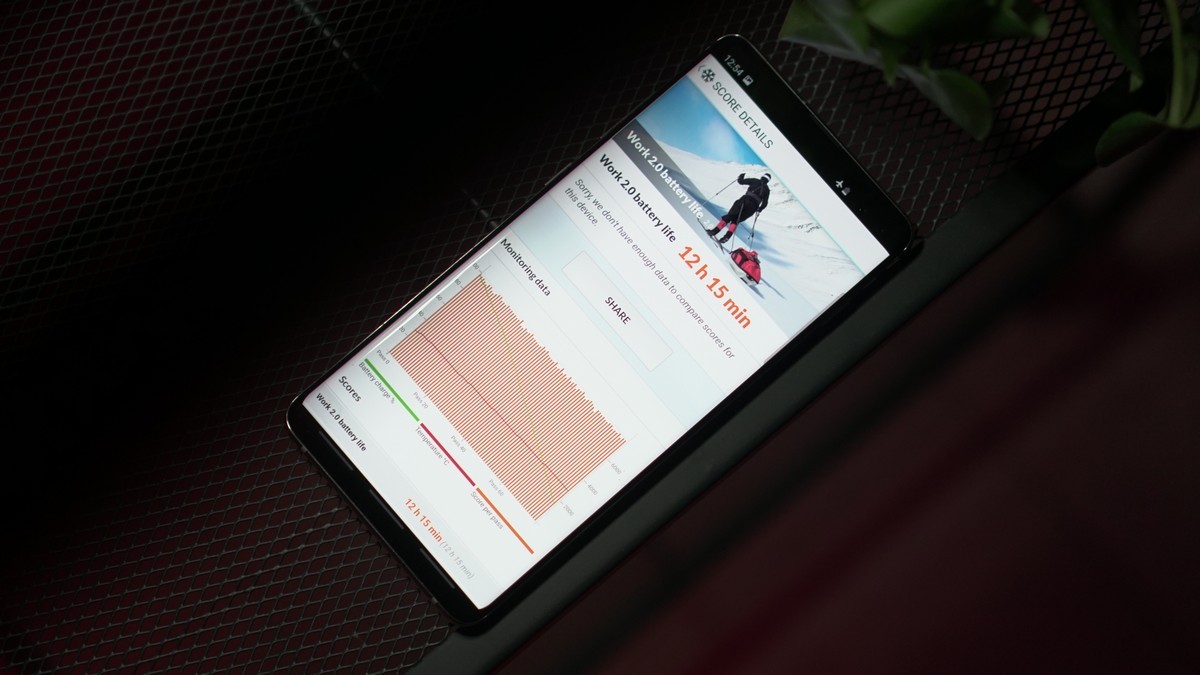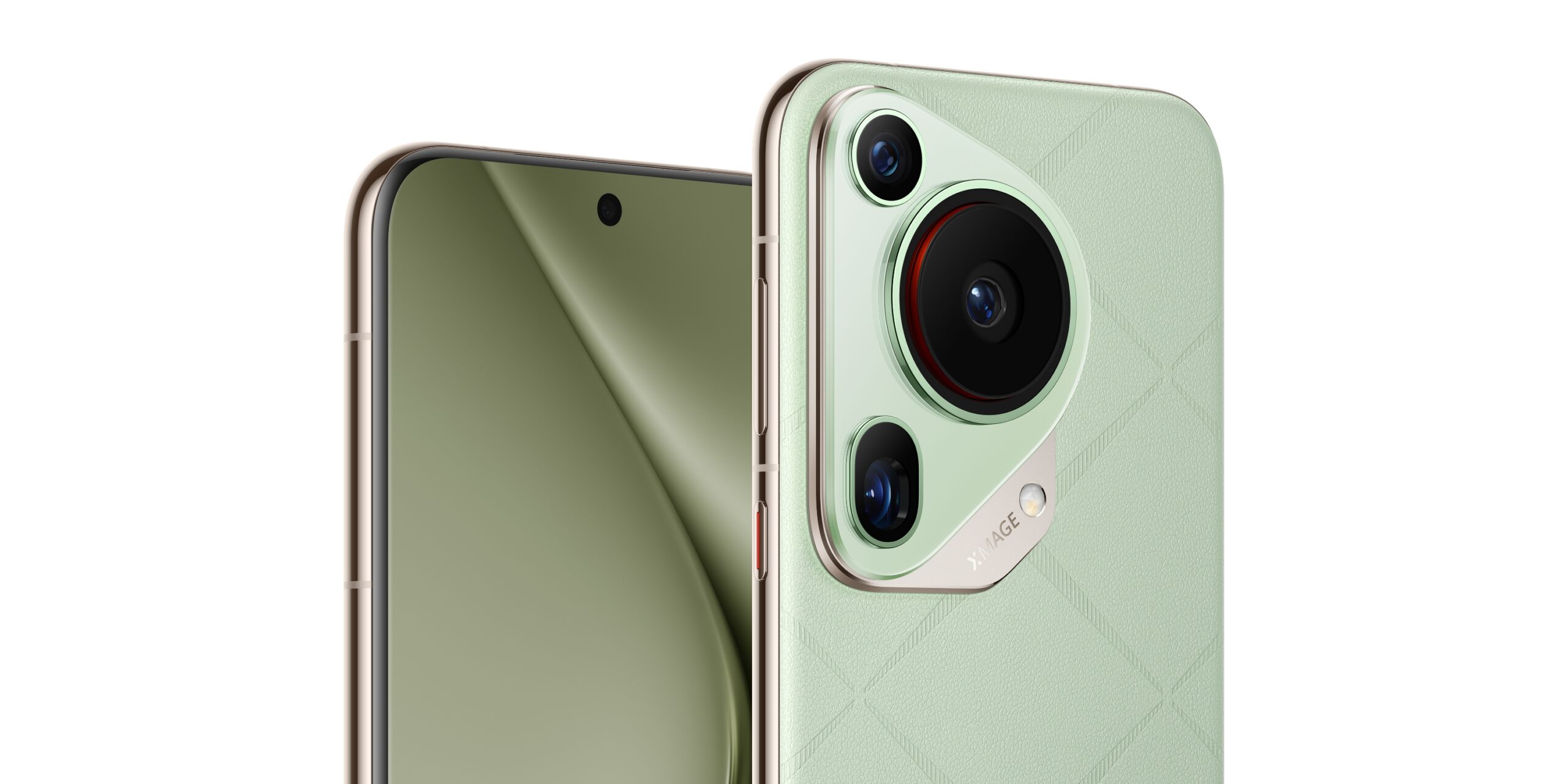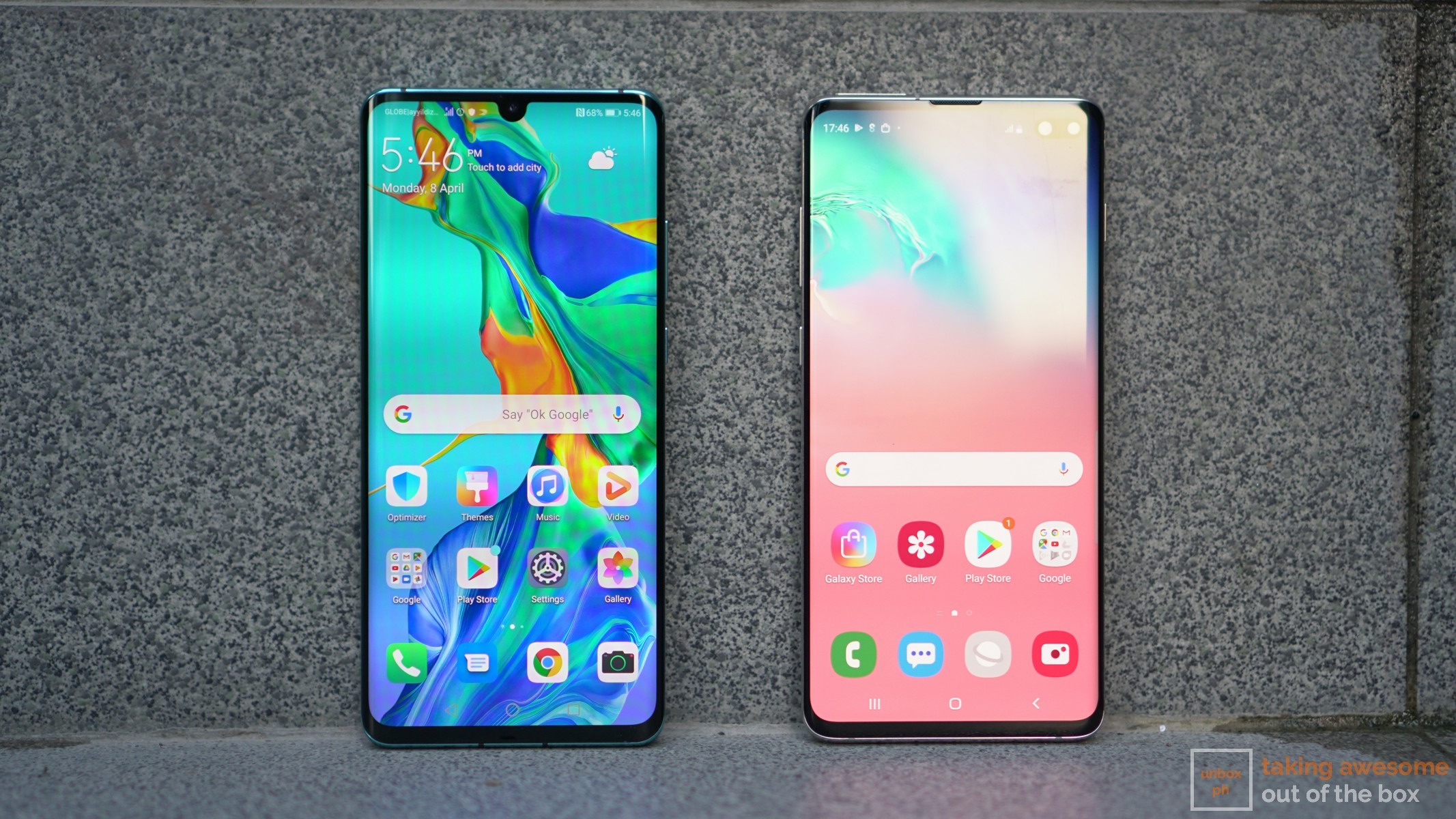
Which of the two top-tier flagships is better?
If you wanted to buy THE best flagship right now, you only have two choices: Samsung’s Galaxy S10 Plus and Huawei’s P30 Pro. These two phones are the most feature-rich smartphones available to buy today, chock full of innovative tech as well as cutting edge camera features.
But if you only have cash to buy one of these phones, which should you buy? Today we’ll be taking a deep dive comparing both of these top-tier flagships to see which one really deserves your hard earned cash. Before we begin, let’s take a look at the specs for both phones:
Huawei P30 Pro specs
- HiSilicon Kirin 980 octa-core processor
- 8GB RAM
- 6.47-inch Full HD+ AMOLED Curved display, 18.7:9 Aspect ratio, DCI-P3 HDR support,
- 2340×1080 resolution
- 128GB/256GB/512GB internal storage, expandable via Nano memory card
- Quadruple Leica rear cameras: 20-megapixel 17mm f/2.2 ultra wide-angle camera; 40-
- megapixel 27mm f/1.6 wide-angle lens with OIS; and 8-megapixel 52mm f/3.4
- periscope telephoto camera with OIS; Time of Flight Sensor; with Ultra Macro Mode,
- Huawei AIS, 10X Hybrid Zoom, 5X Optical Zoom, Master AI, Dual View Video, up to ISO
- 409600 sensitivity
- 32-megapixel front camera
- Dual SIM
- WiFi, Bluetooth, Dual band GPS, NFC
- In-display fingerprint scanner, face unlock, IP68 rating
- 4200mAh battery with 40W fast charging and 15W wireless charging
- Android 9 Pie (EMUI 9.1)
Samsung Galaxy S10 Plus Specs
- Samsung Exynos 9820 octa-core processor
- Mali-G76 MP12 GPU
- 8GB/12GB RAM
- 6.4-inch WQHD Dynamic Super AMOLED Infinity-O display, 3040 x 1440 resolution, dual
- curved edge, HDR10+
- 128GB/1TB expandable storage, via microSD
- Triple rear cameras: 12-megapixel primary camera with f/1.5 and f/2.4 aperture; 12-
- megapixel telephoto camera with f/2.4 aperture and 2x optical zoom; 16-megapixel
- ultra-wide camera; with Dual Pixel, Dual OIS, 960FPS Super Slo-Mo video, 4K HDR10+
- shooting at 30FPS/4K shooting at 60FPS
- Dual front cameras: 10-megapixel f/1.9 main camera; 8-megapixel f/2.2 wide-angle
- camera; dual-pixel autofocus, 4K video recording
- Dual SIM
- 3G, LTE, WiFi 6
- GPS, A-GPS, GLONASS
- Ultrasonic Fingerprint scanner, facial recognition, heartbeat sensor, IP68 certification,
- USB Type-C port, Bixby AI, 3D Emojis
- 4100mAh battery with fast charging and wireless charging
- Android 9.0 Pie (One UI)
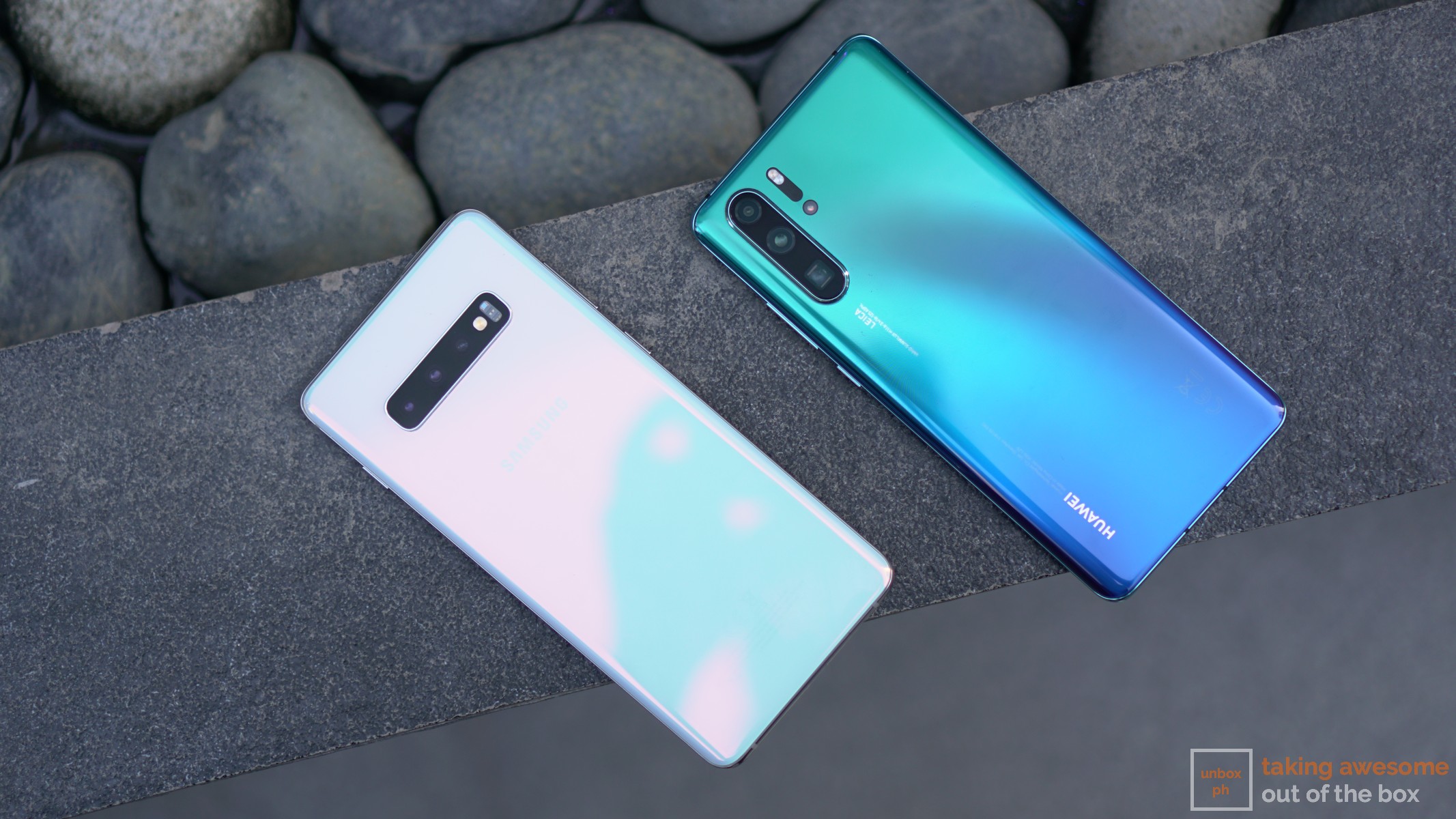
Build and Design:
Both Samsung and Huawei have established design languages for their flagship lineups. The Galaxy S10 Plus still retains the same curved body that Samsung has been utilizing for their flagships in years past, though the flagship gets new, more eye-catching color options this year.
Huawei has similarly refined the design language of the P30 Pro from last year’s iteration, with the phone now utilizing a curved display to match its rear.
Huawei practically invented the gradient finish on phones with their P20 Pro last year, and it’s no surprise that the company came out with even stylish and eye-catching colorways for their P30 Pro this year.
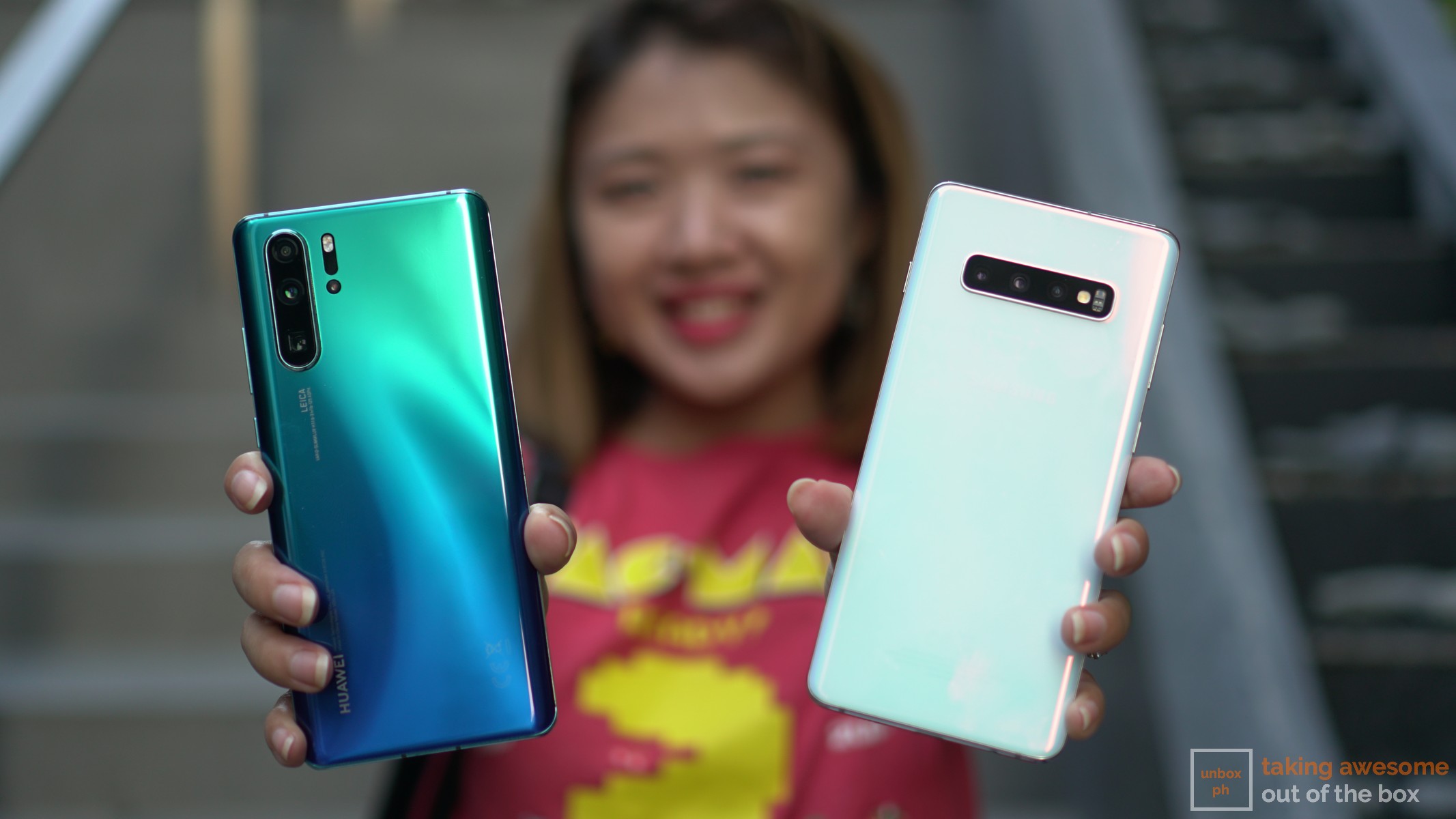
Samsung’s Galaxy S10 Plus has three cameras arranged horizontally on the back, while P30 Pro’s quad cameras are arranged vertically, and are offset to the left side, on the rear. Both cameras protrude a few mm from the rear, which is a little annoying.
While both phones sport Gorilla Glass protection for the glass backs, both have a tendency to get scratched if you don’t keep them in their respective protective cases. Both phones are also IP68 rated, which means both can survive an accidental dunking without too many problems.
Both phones feel great in the hand and both exude quality the moment you pick them up and start using them. It’s no surprise – Samsung has been building phones forever, and while Huawei is still relatively new compared to their Korean rival, they’ve managed to master the art of building high-quality phones quickly.
The Galaxy S10 Plus has a 3.5mm jack, which the P30 Pro lacks.
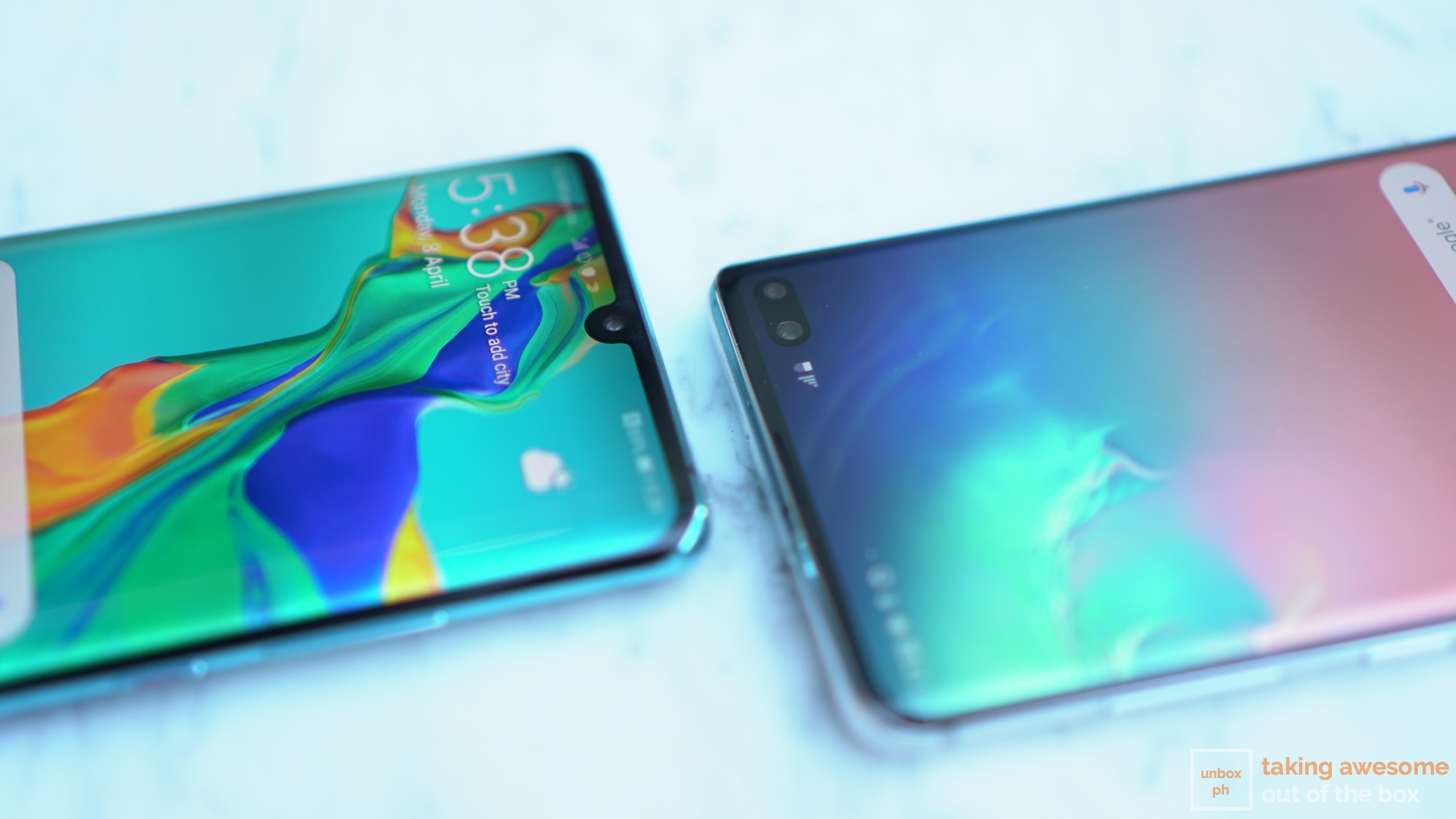
Display:
Both phones sport curved panels, though there are slight differences in both the overall size and quality. The P30 Pro has a bigger OLED panel, coming in at 6.47-inches, while the Galaxy S10 Plus’ Super AMOLED panel is a little smaller, at 6.4-inches.
In terms of resolution, the Galaxy S10 Plus has the upper hand, as it has a WQHD (2K) panel compared to the full HD+ panel on the P30 Pro.
Samsung’s Galaxy S10 Plus also beats the P30 Pro in terms of overall display quality, thanks to the Dynamic Super AMOLED panel along with HDR10+ capability.
New this year for Samsung’s S series is the hole-punch display, putting the dual selfie cameras of the Galaxy S10 Plus on the right side of the display, out of your central field of view. The P30 Pro, on the other hand, uses a tiny dewdrop notch.
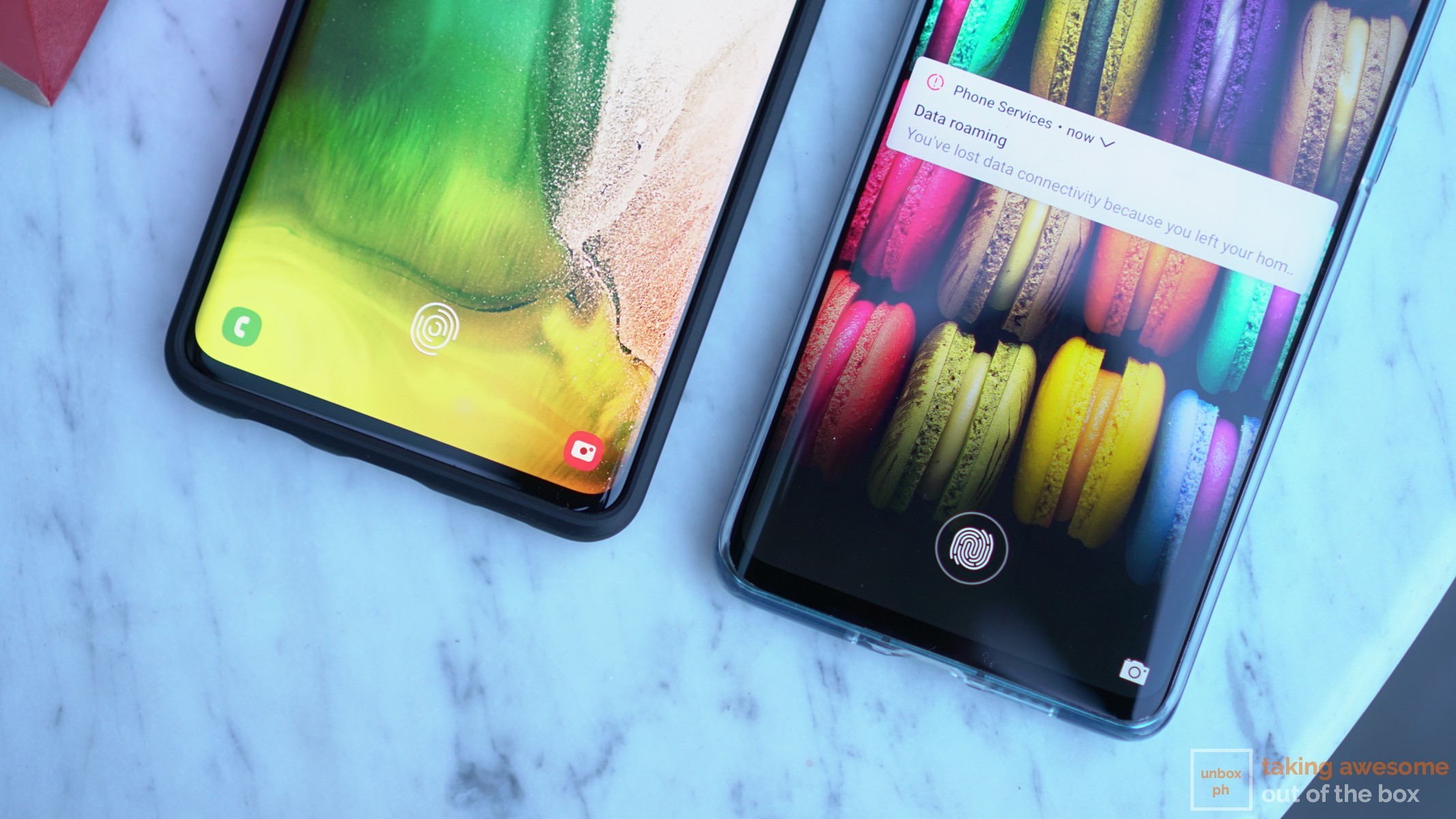
Both phones have in-screen fingerprint scanners, though in our experience the one in the Galaxy S10 Plus worked faster than the one in the P30 Pro.
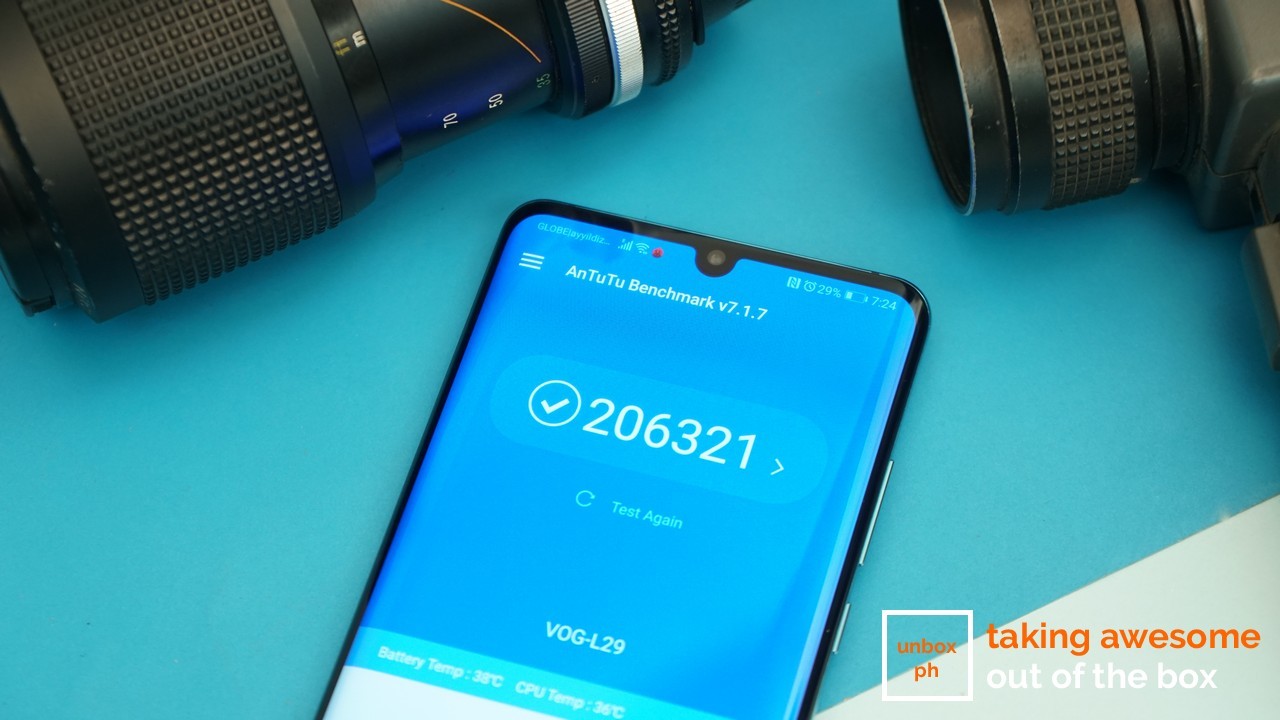
Hardware:
While the P30 Pro sports Huawei’s top-tier processor, the Kirin 980, the phone lags considerably behind Samsung’s own Exynos 9820 chipset, at least when it comes to benchmark scores in AnTuTu.
And while the Exynos 9820 is objectively the faster processor of the two, user experience between the two phones are roughly the same. Both phones feel fast and zippy, and quickly multi-tasks between apps and games without any issues.
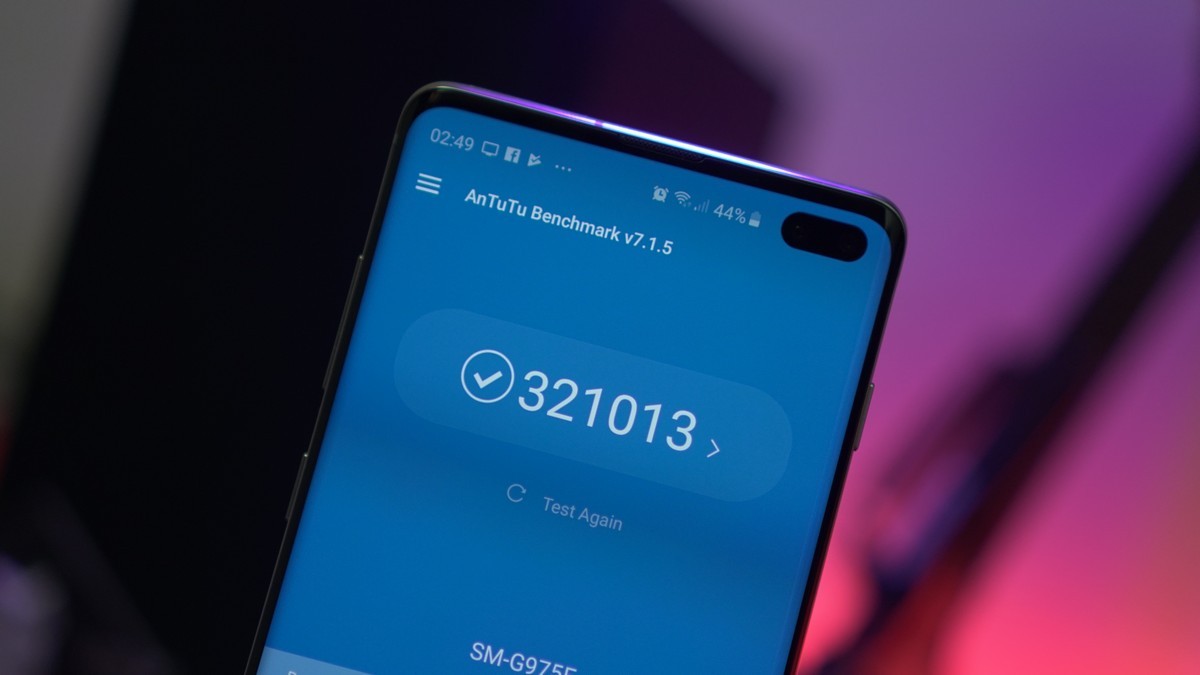
As for specific configurations, Samsung is offering the Galaxy S10 Plus in two variants: 128GB and 1TB. Both variants get 8GB of RAM.
Huawei meanwhile is offering the P30 Pro with just one SKU: 8GB of RAM and 256GB of storage.
Both phones have expandable storage, though the P30 Pro uses Huawei’s proprietary Nano memory card. The Galaxy S10 Plus uses standard microSD cards.
Software and UI:
Neither the Galaxy S10 Plus nor the P30 Pro run stock versions of Android, instead they rock the latest UI overlay from Samsung and Huawei respectively. The Galaxy S10 Plus has the newest One UI overlay, while the P30 Pro has Huawei’s EMUI, now on version 9.1.
We can’t really say which overlay is better since that usually boils down to user preference. We can say Samsung’s One UI is a lot cleaner than Huawei’s EMUI, though historically both manufacturers struggle with providing timely OS updates.
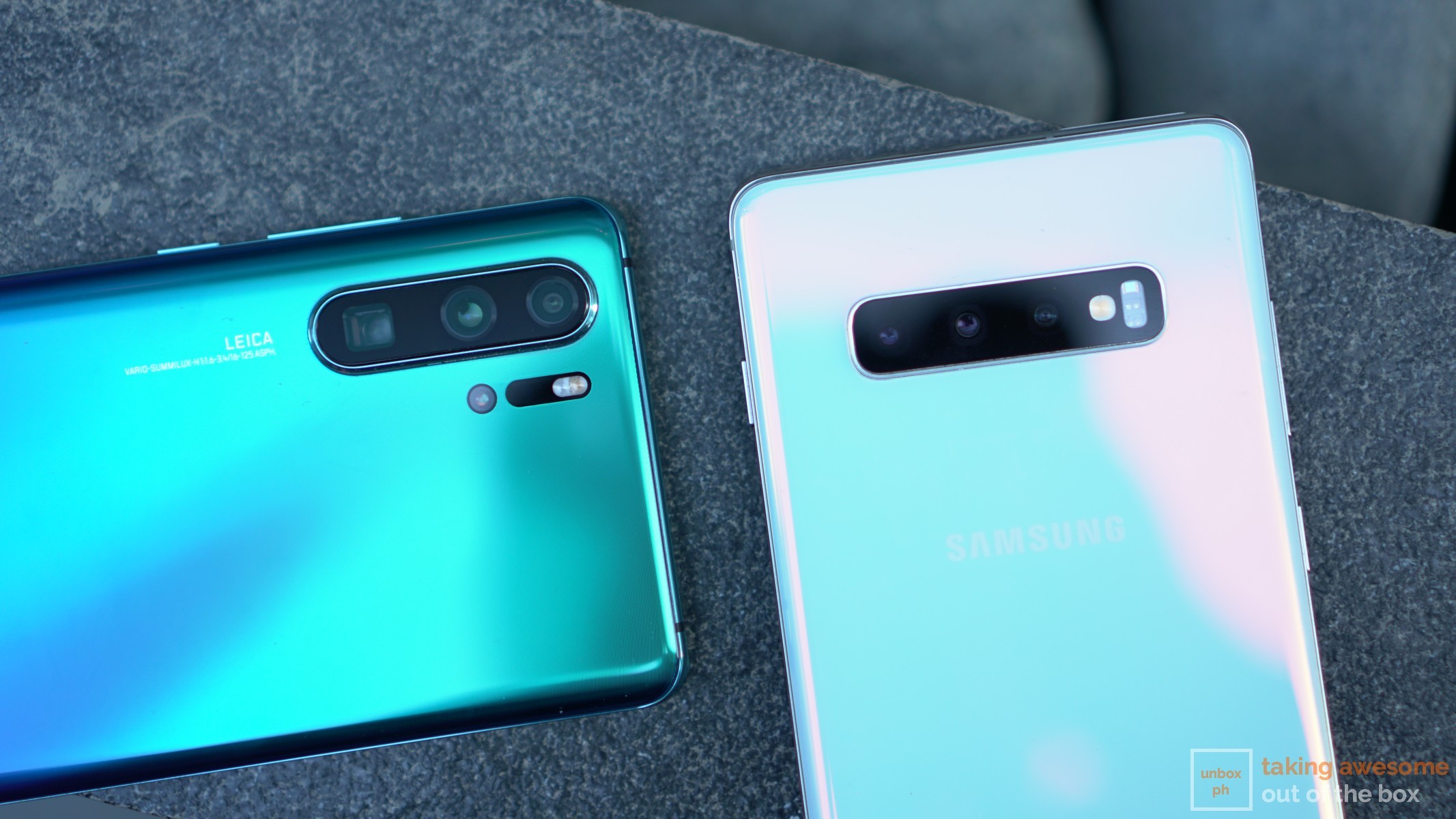
Cameras:
Both the Galaxy S10 Plus and the P30 have five cameras total in their bodies, though the main difference here is how they’re spread out.
The Galaxy S10 Plus has two front selfie cameras, with a 10-megapixel f/1.9 main camera providing regular shots with a 8-megapixel f/2.2 wide-angle camera shooting wide-angle selfies.
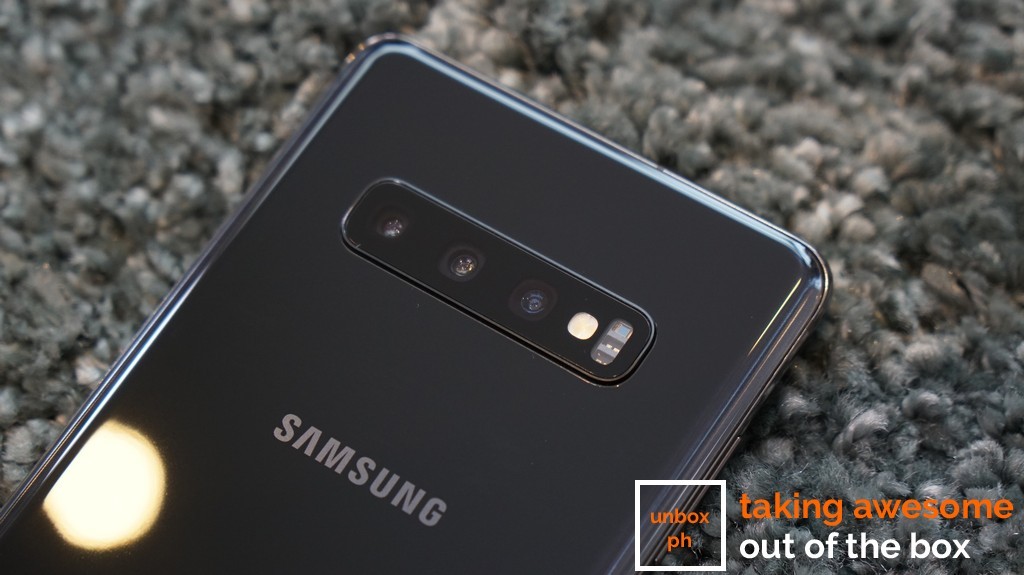
On the rear sits three cameras: a 12-megapixel primary camera with variable f/1.5 and f/2.4 aperture, a 12-megapixel telephoto camera with f/2.4 aperture and 2x optical zoom and a 16-megapixel ultra-wide camera. The Galaxy S10 Plus has dual OIS, 4K recording, HDR10+ shooting at 30FPS as well as the ability to shoot 4K at 60 FPS.
The P30 Pro on the other hand, has one 32-megapixel front camera with the rest spread out on the rear.
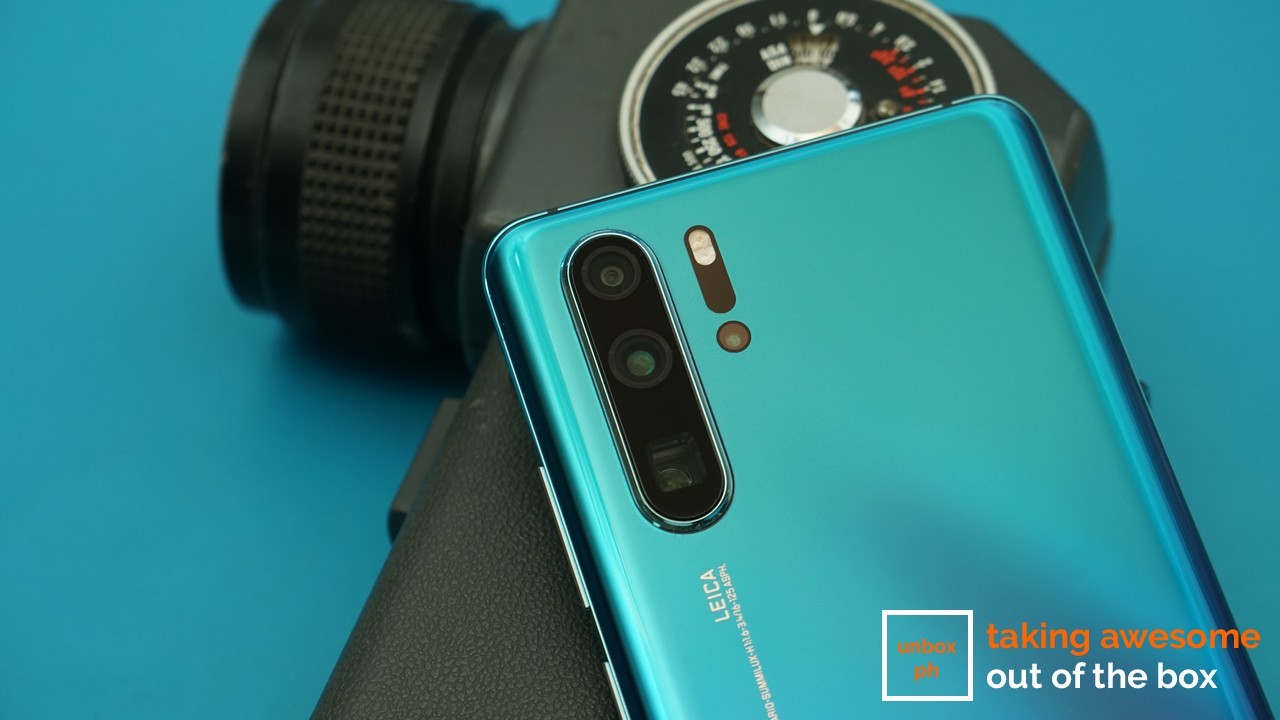
The P30 pro has a quadruple Leica branded cameras, consisting of a 20-megapixel 17mm f/2.2 ultra-wide-angle camera, a 40-megapixel 27mm f/1.6 wide-angle lens with OIS, an 8-megapixel 52mm f/3.4 periscope telephoto camera with OIS and a Time of Flight Sensor. The phone can shoot 4K 30 FPS videos as well as 960FPS super slow-mo, has OIS and can shoot both wide angle and zoomed shots in video at the same time, though this capability is yet to arrive via OTA.
Let’s start with the selfie cameras. Huawei’s 32-megapixel selfie shooter captures more detail thanks to its higher resolution camera, and shoots wider than Samsung’s dual selfie cam.
The Galaxy S10 Plus’ ultra-wide angle lens capture more of the scene than the P30 Pro, though we noticed that the P30 Pro’s wide-angle camera takes in more light, despite both phones having the same aperture.
The main cameras both produce excellent photos, though we’ve noticed that the P30 Pro has an overall warmer tone compared to the Galaxy S10 Plus.
The S10 Plus handles Dynamic Range a tad better than the P30 Pro, though we noticed that Huawei’s flagship manages to take more detail in scenes.
One of our biggest complaints with Huawei phones in the past was the aggressive post-processing applied by the AI. Thankfully Huawei has managed to tweak how the Master AI applies saturation and exposure to images taken by the camera, and the results are photos that pop but don’t look artificial. Several photos of the Cherry trees taken in the Frankfurt Botanical Garden benefited from the AI, making them look more vivid and pleasing to the eye.
As for low-light photography, the P30 Pro takes the cake easily. The new 40-megapixel SuperSpectrum sensor in the phone’s main camera is able to take gorgeous photos even in extreme low light, something that the Galaxy S10 Plus is unable to match.
The P30 Pro can go up to a ridiculous 409600 ISO if need be, which is insane considering that the camera we use for work, Sony’s A6300, only go up to 51200 ISO.
Moving on to the telephoto cameras, the Galaxy S10’s 2x optical zoom lens is really no match for the P30 Pro’s 5x lossless optical zoom.
When shooting past 2x Samsung’s Galaxy S10 Plus produces digital zoom, which the P30 Pro’s 5x lossless zoom easily trounces.
The amount of detail the P30 Pro can take is insane at 5x, and thanks to OIS in the camera the phone can still take respectable photos even in less than ideal lighting.
You can easily see text on several photos with the P30 Pro’s 10x hybrid zoom, which is unreadable with the Galaxy S10 Plus’ 10x digital zoom.
The Huawei P30 Pro has a Time of Flight camera, which is intended to gather more depth detail for software bokeh and AR applications. Photos taken with the phone’s portrait mode benefit from the added depth information, adding a nice layer of artificial bokeh to the photos compared to the Galaxy S10 Plus.
The P30 Pro is extremely impressive when it comes to taking photos, and it’s no wonder that the phone has been hailed as the having the best cameras on any smartphone by independent image benchmarking site DxOMark.
If the P30 Pro has an Achilles heel, it’s got to be video. The S10 Plus can shoot 4K 60FPS, something that the P30 Pro can’t match as it tops out at 4K 30FPS. Audio pickup is a lot better on the Galaxy S10 Plus too.
The P30 Pro does give aspiring videographers more tools to play with thanks to the AI enhancements present. AI Color, Background Blur, and other video overlays give mobile videographers a better toolset to choose from.
(All photos above can be seen in their uncompressed form from this link)
Battery:
Both phones come with pretty hefty batteries, though the P30 Pro has a slight 100mAh edge versus the Galaxy S10 Plus (4200mAh VS 4100mAh). On PCMark’s battery benchmark, the P30 Pro is the clear winner, coming in at 13 hours and 30 minutes on a single charge, compared to the 12 hours and 15 minutes on the Galaxy S10 Plus.
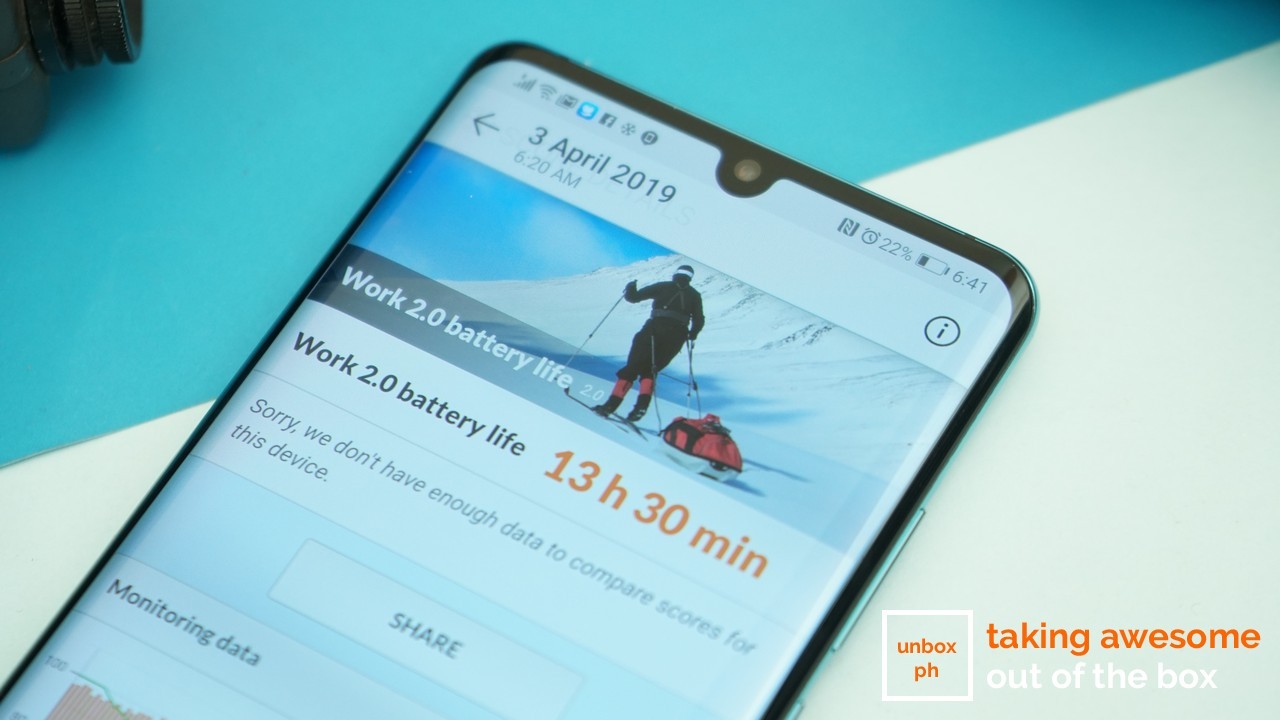
The P30 Pro wins when it comes to fast charging too, as the Galaxy S10 Plus is limited by its 15W charging capabilities. The P30 Pro, on the other hand, has Huawei’s SuperCharge tech, and has a 40W charger that can top up the phone to 70% in just 30 minutes.
Both phones have wireless charging capabilities as well as reverse wireless charging.
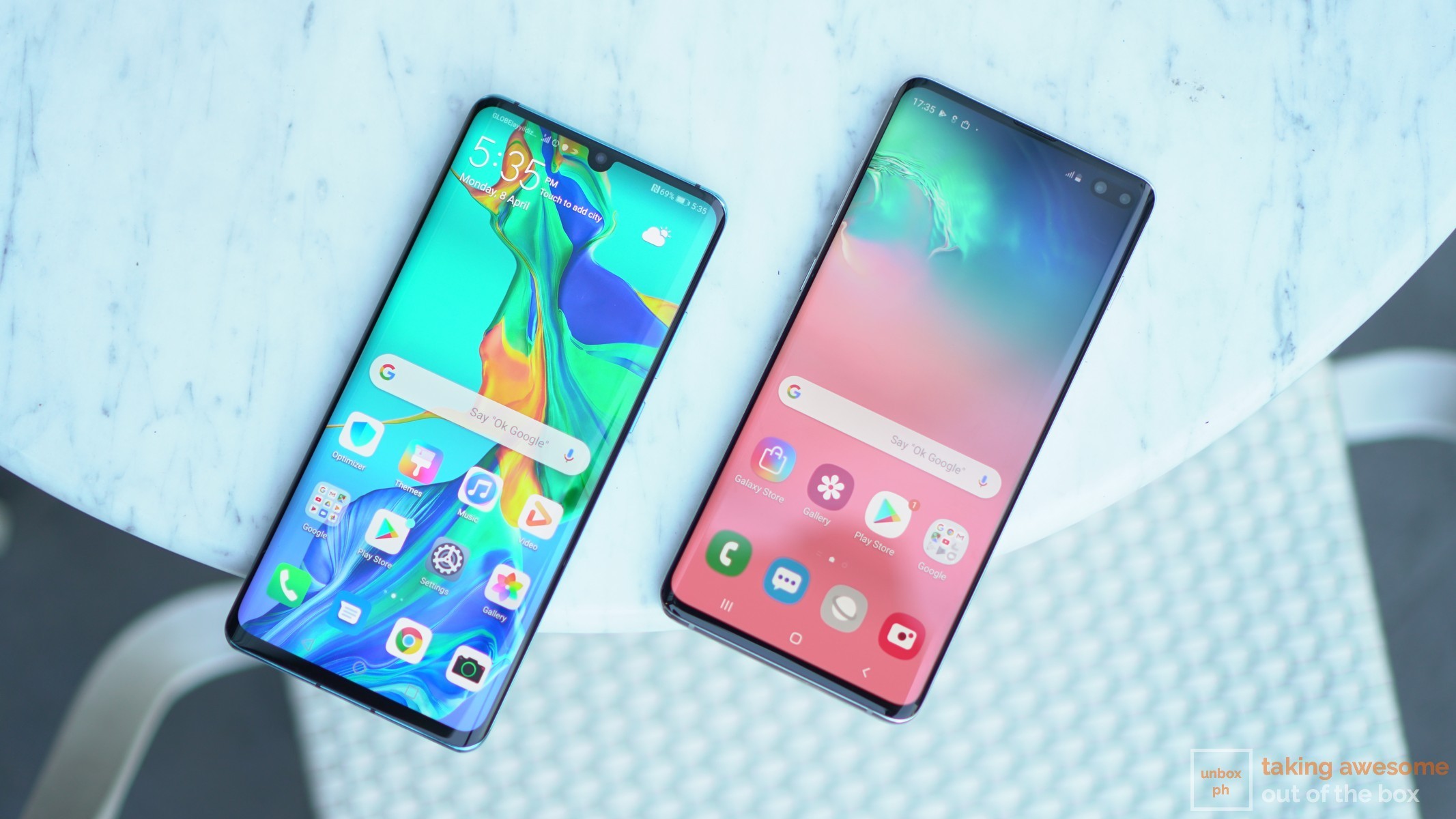
Price and wrap up:
The Galaxy S10 Plus is a bit more expensive than the P30 Pro, coming at Php 55,990 for the 128GB variant. The P30 Pro meanwhile is priced at 50,990 for the 256GB variant. The P30 Pro gets both the price and storage edge over Sammy’s standard Galaxy S10 Plus.
The P30 Pro is a photography powerhouse, more so than the Galaxy S10 Plus in our opinion. The P30 Pro gives mobile photographers a whole suite of tools to take photos with, from a wide angle lens to an extreme zoom lens.
Huawei’s additional video overlays and better video toolset puts the phone at par with the Galaxy S10 Plus in our opinion, though if you’re looking for a phone that beats benchmark records, you’d probably be better served with Samsung’s offering.
It all boils down to what’s important to you of course, but if you’re looking for a phone with the best cameras, you can’t do any better than Huawei’s P30 Pro.
Read our full review of the Samsung Galaxy S10 Plus and Huawei P30 Pro below:
2019 Flagship Face Off: Samsung Galaxy S10 Plus vs. Xiaomi Mi 9
































































































